Charles Onwuakpa provides us with a tactical analysis of the World Cup semi final that ended Croatia 2-1 England.
Croatia reached their first ever World Cup final after a two-goal fightback against England.
Goals in the second halves of normal & extra time from Ivan Perišić and Mario Mandžukić respectively cancelled out the Three Lions‘ initial advantage courtesy of a Kieran Trippier free kick in what proved to be a very intense game.
Starting lineups

Made using TacticalPad
Croatia (4-3-3): Subašić; Vrsaljko, Lovren, Vida, Strinić; Rakitić, Brozović, Modrić; Rebić, Mandžukić, Perišić.
Coach: Zlatko Dalić.
England (3-5-2): Pickford; Walker, Stones, Maguire; Trippier, Lingard, Henderson, Alli, Young; Sterling, Kane.
Coach: Gareth Southgate.
England take the lead
The foul which lead to Trippier’s wonderful freekick execution (England’s 9th set-piece goal out of 12 scored so far) was a result of Croatia’s early press which left space on both sides of their central midfield: Jesse Lingard brillianty controlled a bad clearance by Croatia and played in Dele Alli, who was fouled at the edge of the penalty box by Luka Modrić, with the latter being caught out of position.
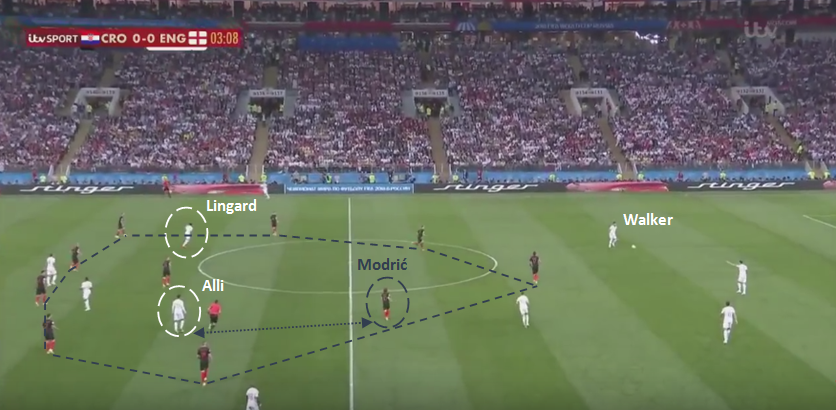
Croatia’s pressing patterns & attacking shape
Croatia reaction was to press England’s buildup from the back: with Mandžukić following Stones, Rakitić & Modrić alternated a high press towards Henderson to a further press towards Stones & Maguire, depending on which side the ball progressed.
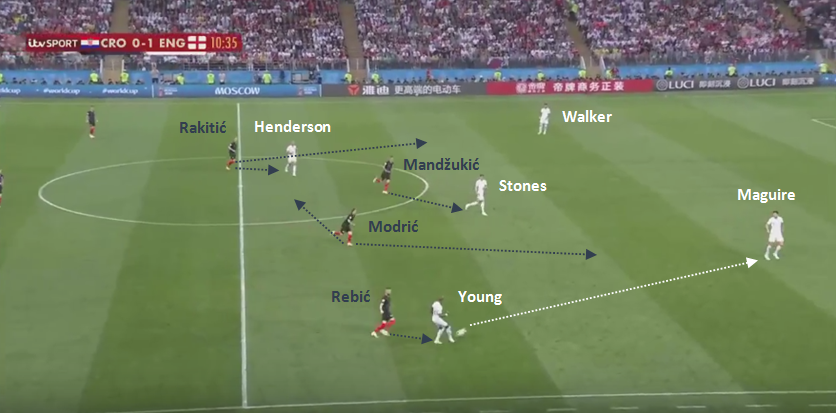
It was almost a 4-3-2-1 shape with the wingers staying deeper to mark England’s wing-backs (although Perišić didn’t always track back, leaving Trippier unmarked) and the full-backs marking Alli & Lingard; the two though were able to combine between the lines in three key occasions in the first half:
- the aforementioned passage of play that lead to Trippier’s goal;
- Kane’s double close-range misses which were (wrongly) ruled offside;
- Lingard’s wide effort when picked out alone at the edge the box.
England were also dangerous on the break, with the pace of Sterling causing issues to Vida & Lovren: the latter in particular stopped a potentially dangerous counter from Kane with an NBA-like block (which went unpunished) and a series of tactical fouls on Sterling, given how high Vrsaljko was in the attacking phase.
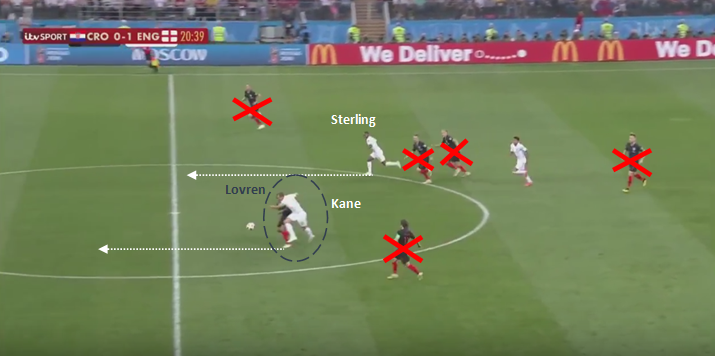
Croatia indeed utilized a 3-1-2-4 shape in their opponent’s own half, mainly relying on wing play: surprisingly, they were slow in possession and looked predicatable in their wing combinations, lacking numbers in the box.
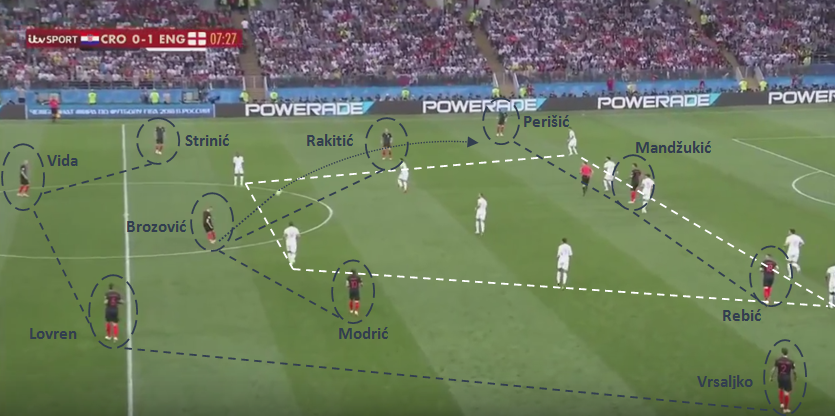
England though soon became too complacent and defended deep: their lack of urgency to kill off the game and decision to play on the counter quickly backfired.
Croatia exploit space in the wide areas
One of the main issues of the 5-3-2 system is the midfield has to cover a lot of width and shift laterally quickly: Alli & Lingard suffered these situations particularly in the second half, as Croatia started dominating possession and finding free players (midfielders + full-backs) in the half-spaces & wide areas.
Brozović was the cog, switching play sharply, playing one-touch passes and controlling the tempo of the encounter alongside Modrić.
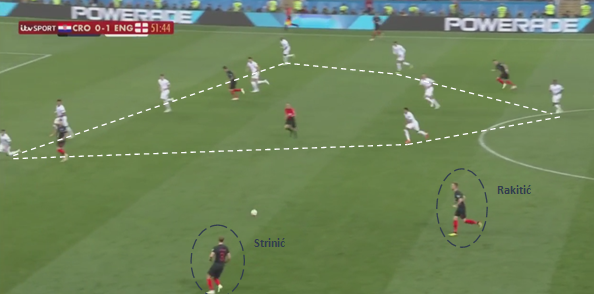
Rebić’s lateral movements
Another key tactical advantage for Croatia were Rebić’s lateral movements, which stretched England’s defensive shape: by playing as an inside forward, especially on the left flank in the second half, he attracted Walker out of position and created space for Strinić to underlap with or without the ball.
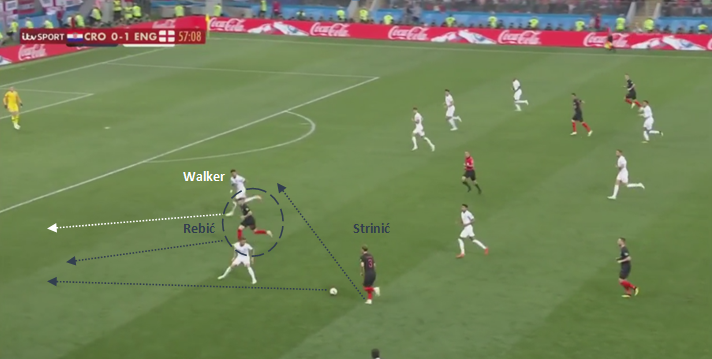
1-1 and 1-2
Both goals from Perišić & Mandžukić exposed England’s problems when defending inside their own penalty box: during the equalizer, Tippier lost his man & Walker was slow to react to Vrsaljko’s whipped cross; during the winner, Stones left the fierce Juventus striker onside and was caught ball-watching.
Both goals galvanized Croatia and were a clear sign of how the game had turned around.
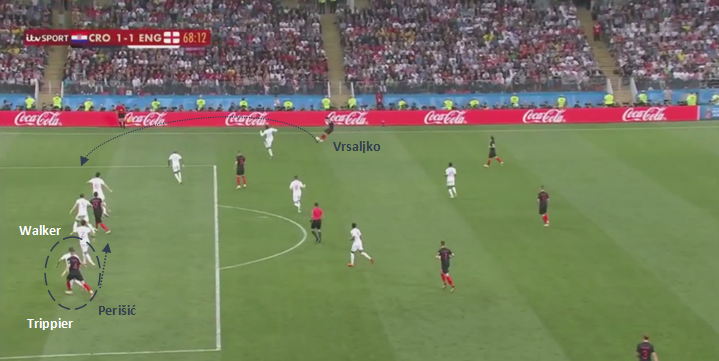
England’s ineffectiveness & Southgate’s lack of tactical flexibility
The Three Lions were clearly being outplayed after the interval: they seemed to lack a plan B or even play their style effectively and ended up losing the ball cheaply, with Pickford forced to play long balls under pressure.
Southgate was too rigid in his tactics: not only did he not tinker with the system giving England’s defensive issues, but he left two strikers on, which was a poor decision as England defended in their own half with basically 8 outfield players while the other two were being isolated with ease: he did bring on Rashford for Sterling (his only substitution in 90 minutes), but it was rather due to the latter suffering fatigue than to the real necessity of a tactical tweak, and it came shortly after Perišić (who had a terrific second half) had hit the post in the 70th minute; another questionable decision was the subbing on of Vardy, whose pace was ineffective and quite useless considering Croatia’s low defensive block in the latter stages of extra time.
Conclusion
Overall, Croatia deserved to reach the final considering the amount & quality of their chances created.
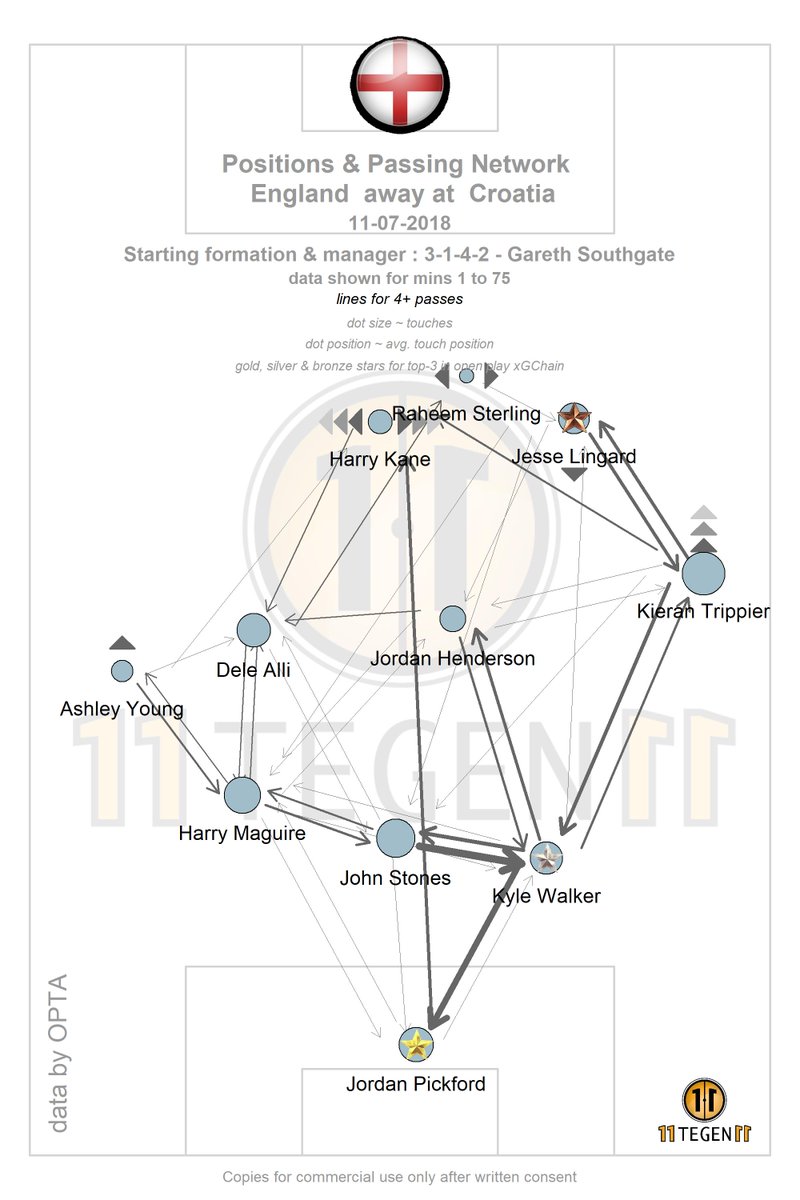
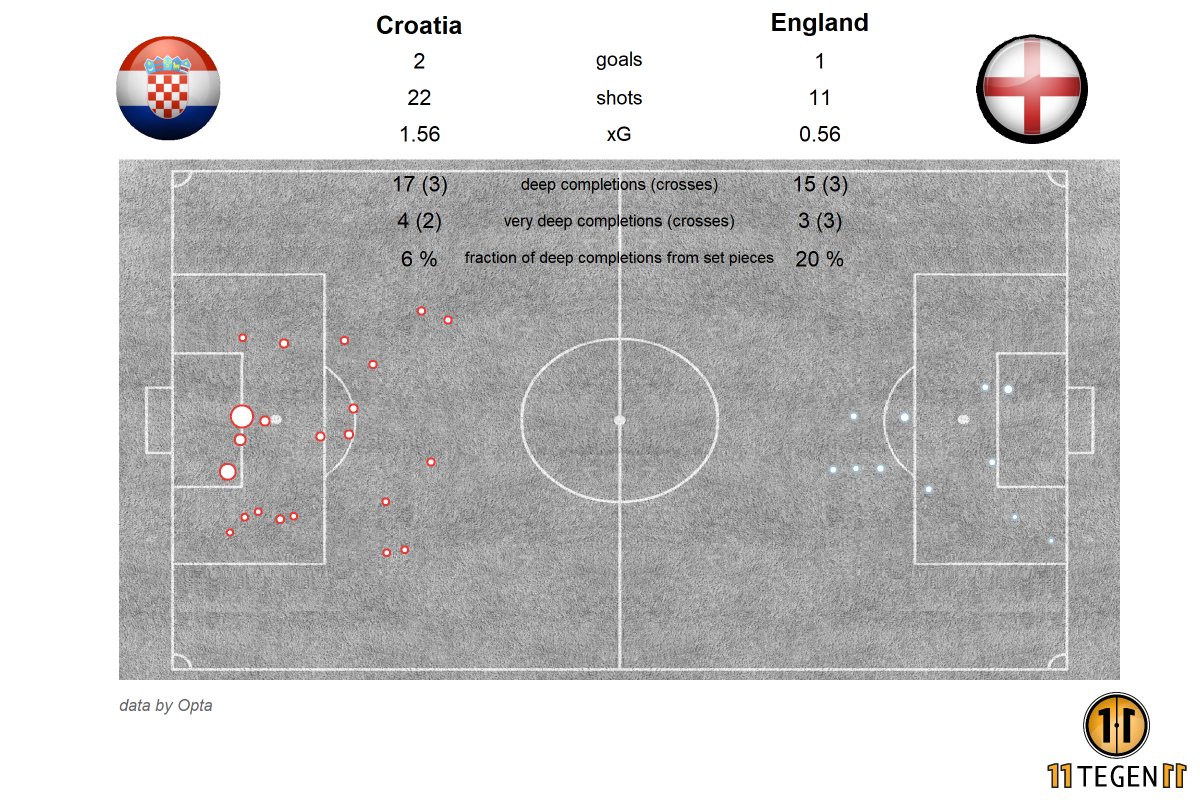
Zlatko Dalić’s men proved themselves as the ultimate “dark horses” in this tournament, and despite a bit of luck in the knockout stage (which was reminiscent of Portugal in Euro 2016), they showed great mental strength and good tactical flexibility: they are a strong, talented side blessed with dynamism in midfield & and extremely mobile, hard-working forwards.
England can be proud of their display at this tournament, although they did lack creativity in midfield and seemed limited in terms of creating open play chances (they didn’t manage any shot on target in the second half); their approach in this game was naive, perhaps due to the little amount of international experience most players had.
Sitting too deep and absorbing pressure rather than going forward for the second goal proved itself a bad strategy in the end.
There will be obviously disappointment considering how close the team was to the final, but there are also lots of positives to take from this experience for Southgate’s men.
Read all our tactical analyses here.























































